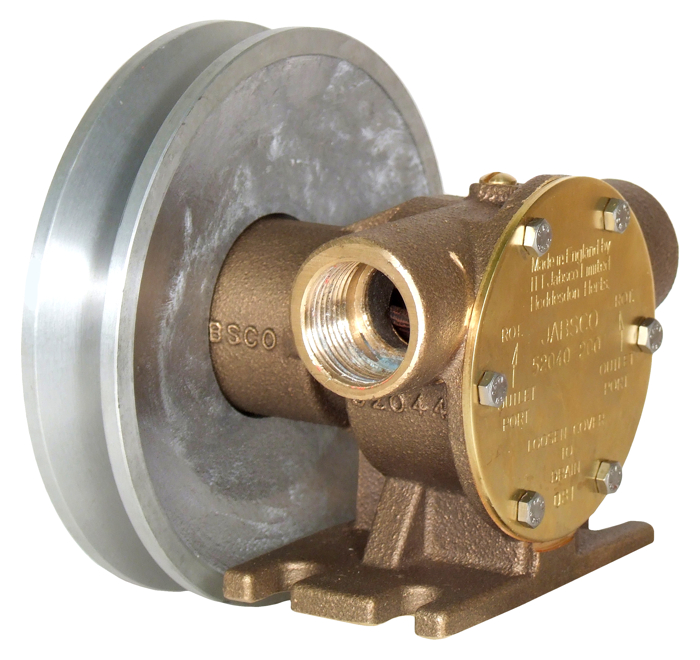I have a 1981 15HP OMC Zephyr saildrive in my boat. The power unit is basically a 25-35HP OMC outboard top end de-tuned to 15HP for longevity and attached to a different bottom end, which protrudes through the the hull sandwiching the fibreglass with what is essentially a giant O-ring (ISO ring) that is no longer available to buy.
Replacing the impeller requires removal of the whole motor and one part that usually ends up suffering damage to the ISO ring. For this reason I'd rather not disassemble it to change impellers anymore.
The current cooling system draws raw water from an intake on the very bottom of the drive leg, pumps it through the motor and then out through a wet exhaust/water muffler/through-hull.
Finally we get to my question...
I need someone with knowledge to tell me if it'll work, because everyone I ask gives me a different answer.
I want to make a barbed/threaded fitting that will fit the cooling system drain cock hole so I can attach a hose from a 12v water pump and feed water through the motor, letting it find it's own way out...either though the exhaust or the old intake. If necessary I could attach a temp probe/relay to keep it at a pre-set operating temp. If necessary I could even regulate flow with an inline valve....it wouldn't require much pressure.
I figure I'd never have to fight with replacing the internal impeller again.
Will it work and if not is there a way to make it work??
Replacing the impeller requires removal of the whole motor and one part that usually ends up suffering damage to the ISO ring. For this reason I'd rather not disassemble it to change impellers anymore.
The current cooling system draws raw water from an intake on the very bottom of the drive leg, pumps it through the motor and then out through a wet exhaust/water muffler/through-hull.
Finally we get to my question...
I need someone with knowledge to tell me if it'll work, because everyone I ask gives me a different answer.
I want to make a barbed/threaded fitting that will fit the cooling system drain cock hole so I can attach a hose from a 12v water pump and feed water through the motor, letting it find it's own way out...either though the exhaust or the old intake. If necessary I could attach a temp probe/relay to keep it at a pre-set operating temp. If necessary I could even regulate flow with an inline valve....it wouldn't require much pressure.
I figure I'd never have to fight with replacing the internal impeller again.
Will it work and if not is there a way to make it work??
Last edited:


